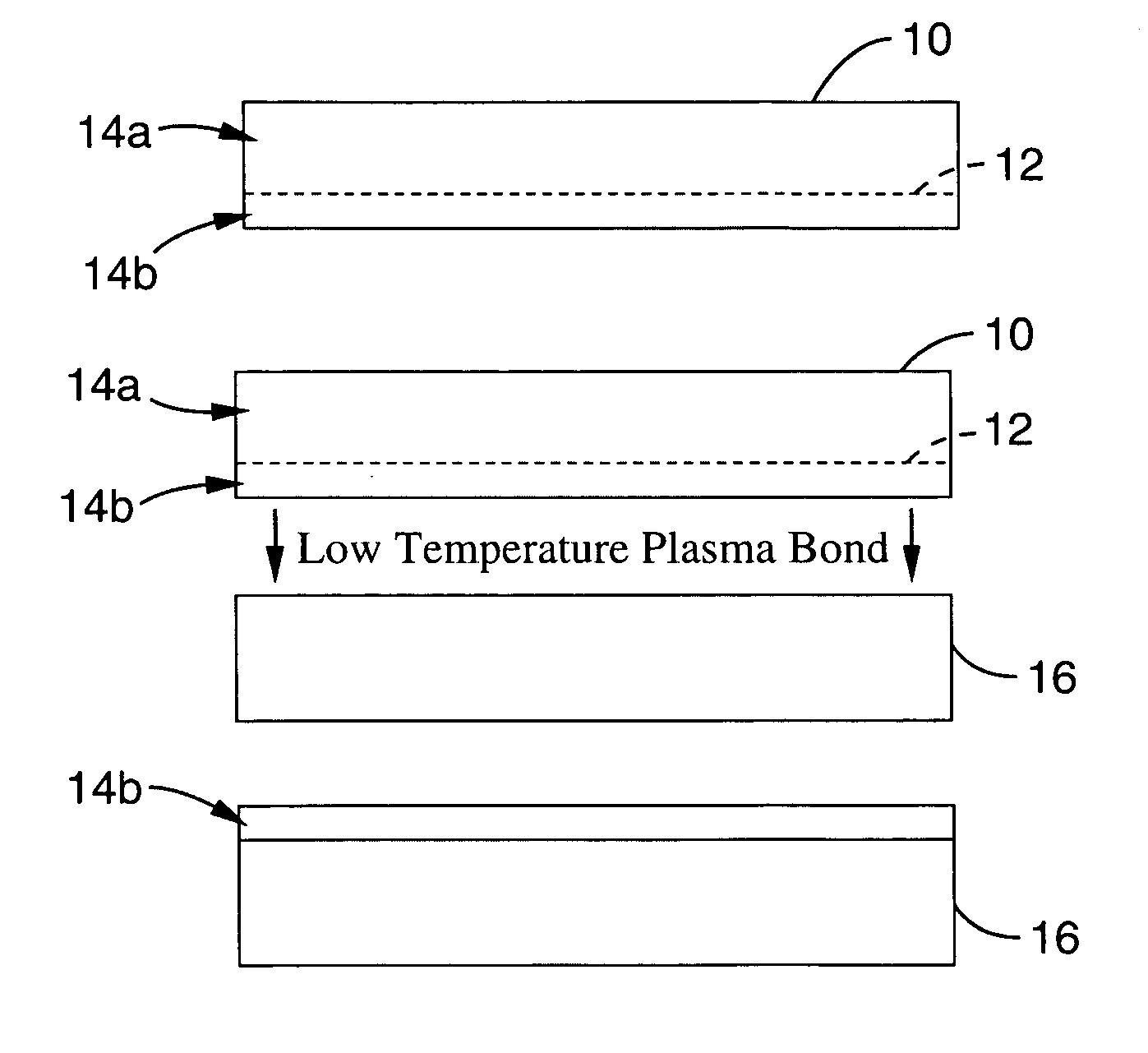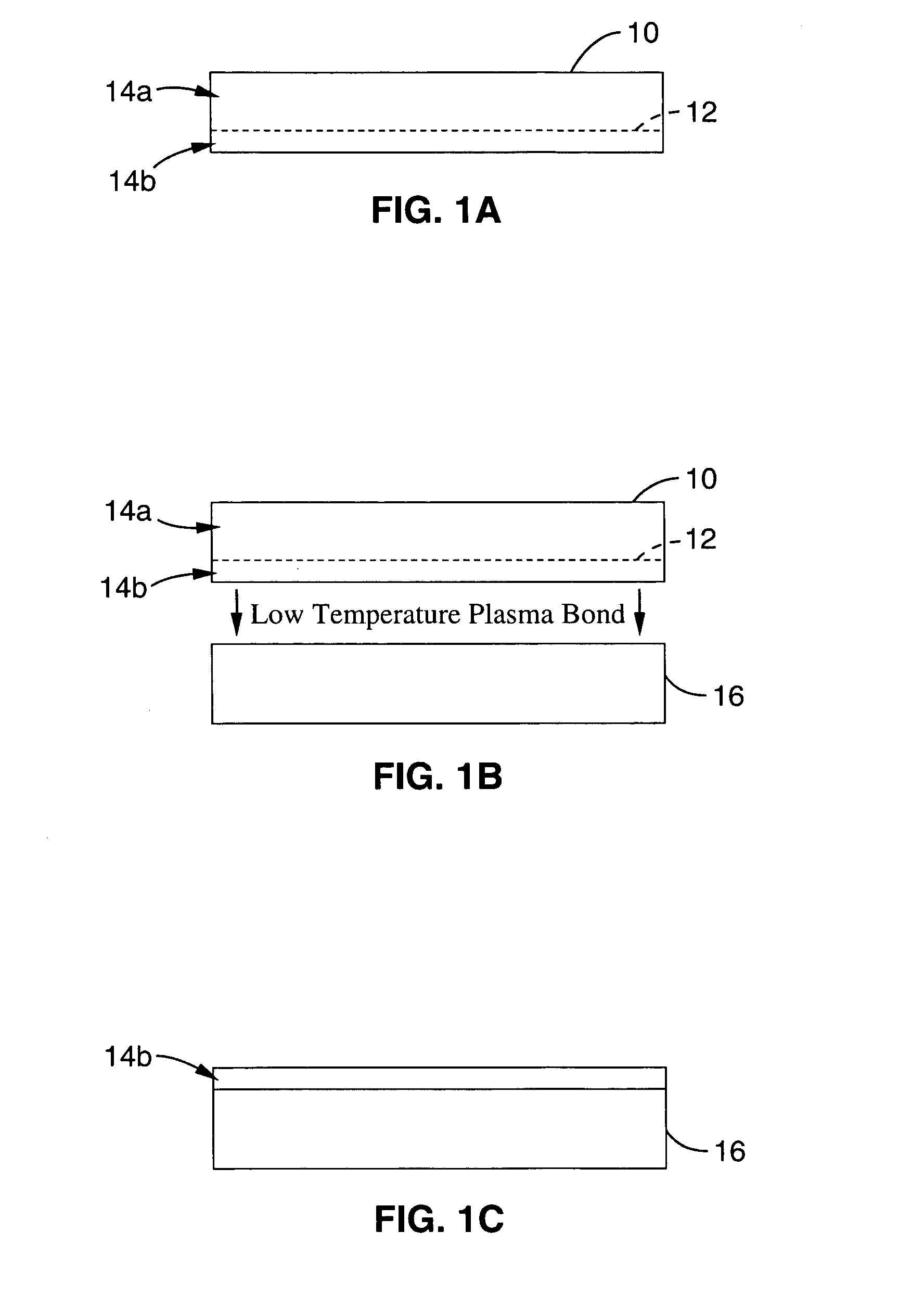Smooth thin film layers produced by low temperature hydrogen ion cut
a thin film, low temperature technology, applied in the direction of basic electric elements, semiconductor/solid-state device manufacturing, electric devices, etc., can solve the problem of insufficient strong stiffeners
- Summary
- Abstract
- Description
- Claims
- Application Information
AI Technical Summary
Problems solved by technology
Method used
Image
Examples
Embodiment Construction
[0031]FIG. 1A through FIG. 1B show the steps for forming a smooth, thin layer of a first material that is low temperature bonded to a second material according to the present invention. Referring first to FIG. 1A, in accordance with the present invention a first material 10 is injected with ions represented by the dashed line 12. The preferred implantation technique is to ion implant hydrogen with a dose of approximately 5×1016 to approximately 1×1017 ions / cm2 at room temperature with energies in the range of approximately 22 KeV to approximately 100 KeV. The ion implantation line 12 defines a cut line between segments 14a, 14b in first material 10. Next, as shown in FIG. 1B and FIG. 1C, ion implantation is then followed by formation of a low temperature bond to a second material 16, preferably using a plasma surface treatment with oxygen as described in the literature [6–14]. Finally, as shown in FIG. 1C, first material 10 is cut along ion implantation line 12 to expunge a thin, sm...
PUM
| Property | Measurement | Unit |
|---|---|---|
| temperature | aaaaa | aaaaa |
| temperature | aaaaa | aaaaa |
| temperatures | aaaaa | aaaaa |
Abstract
Description
Claims
Application Information
 Login to View More
Login to View More - R&D
- Intellectual Property
- Life Sciences
- Materials
- Tech Scout
- Unparalleled Data Quality
- Higher Quality Content
- 60% Fewer Hallucinations
Browse by: Latest US Patents, China's latest patents, Technical Efficacy Thesaurus, Application Domain, Technology Topic, Popular Technical Reports.
© 2025 PatSnap. All rights reserved.Legal|Privacy policy|Modern Slavery Act Transparency Statement|Sitemap|About US| Contact US: help@patsnap.com


